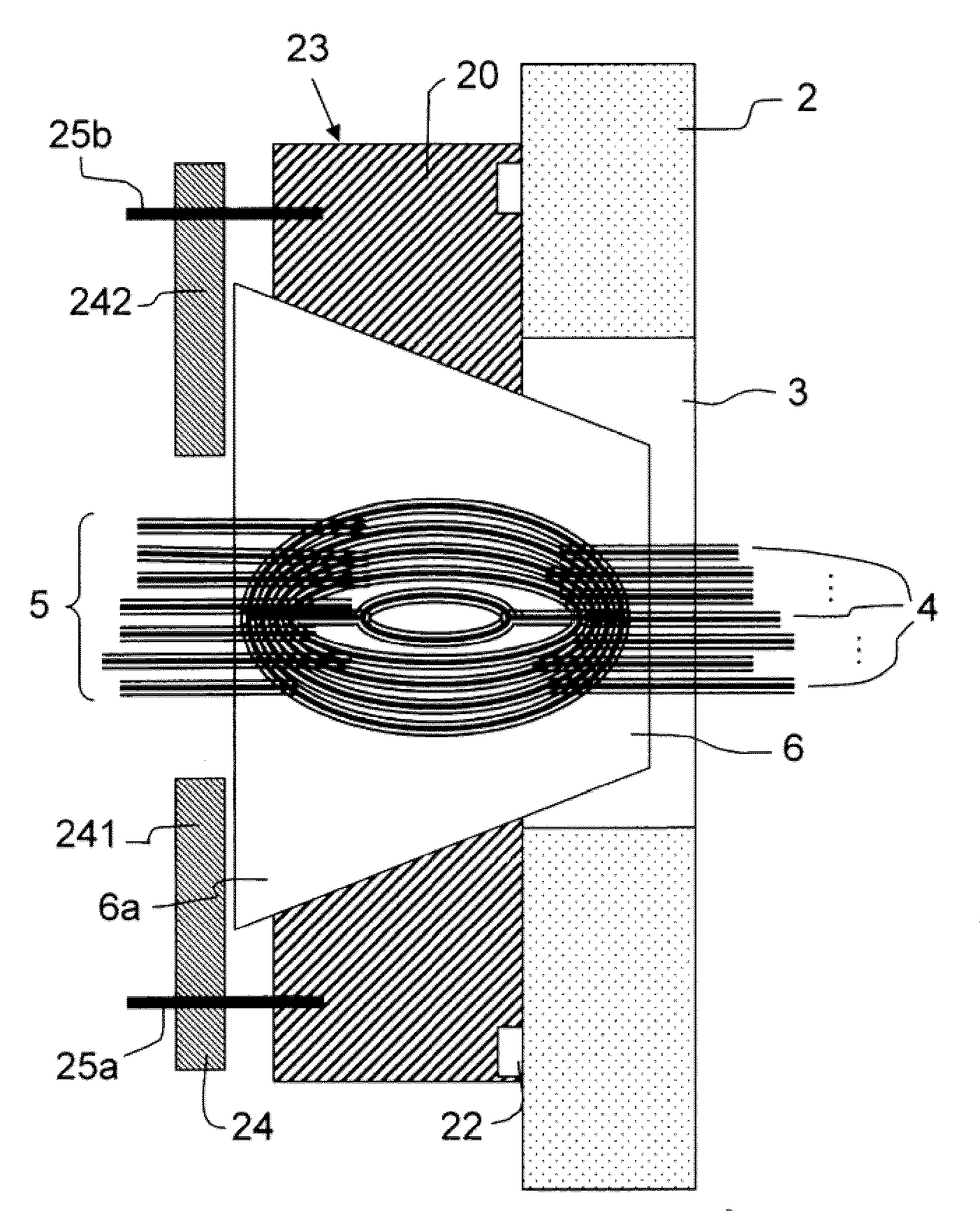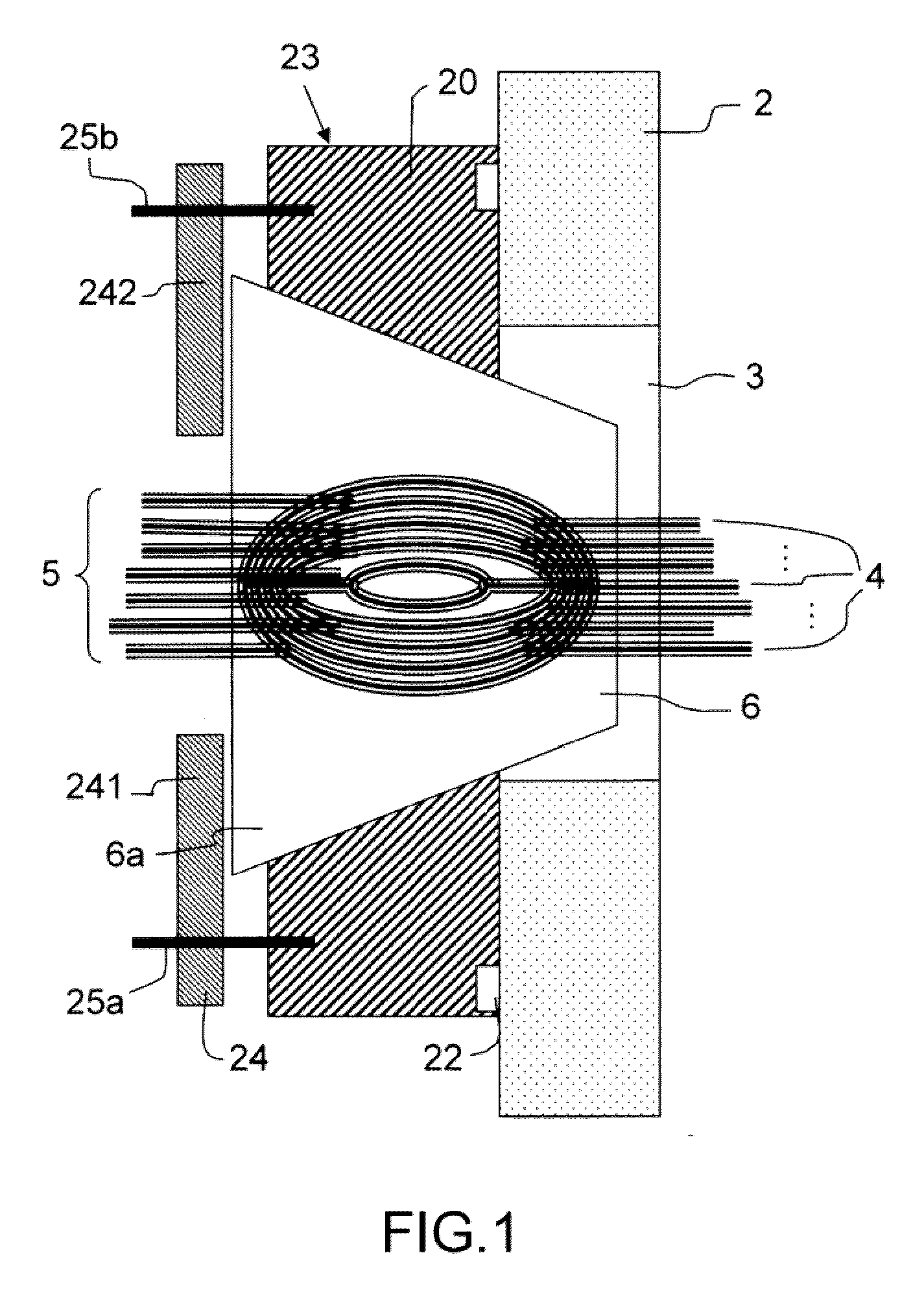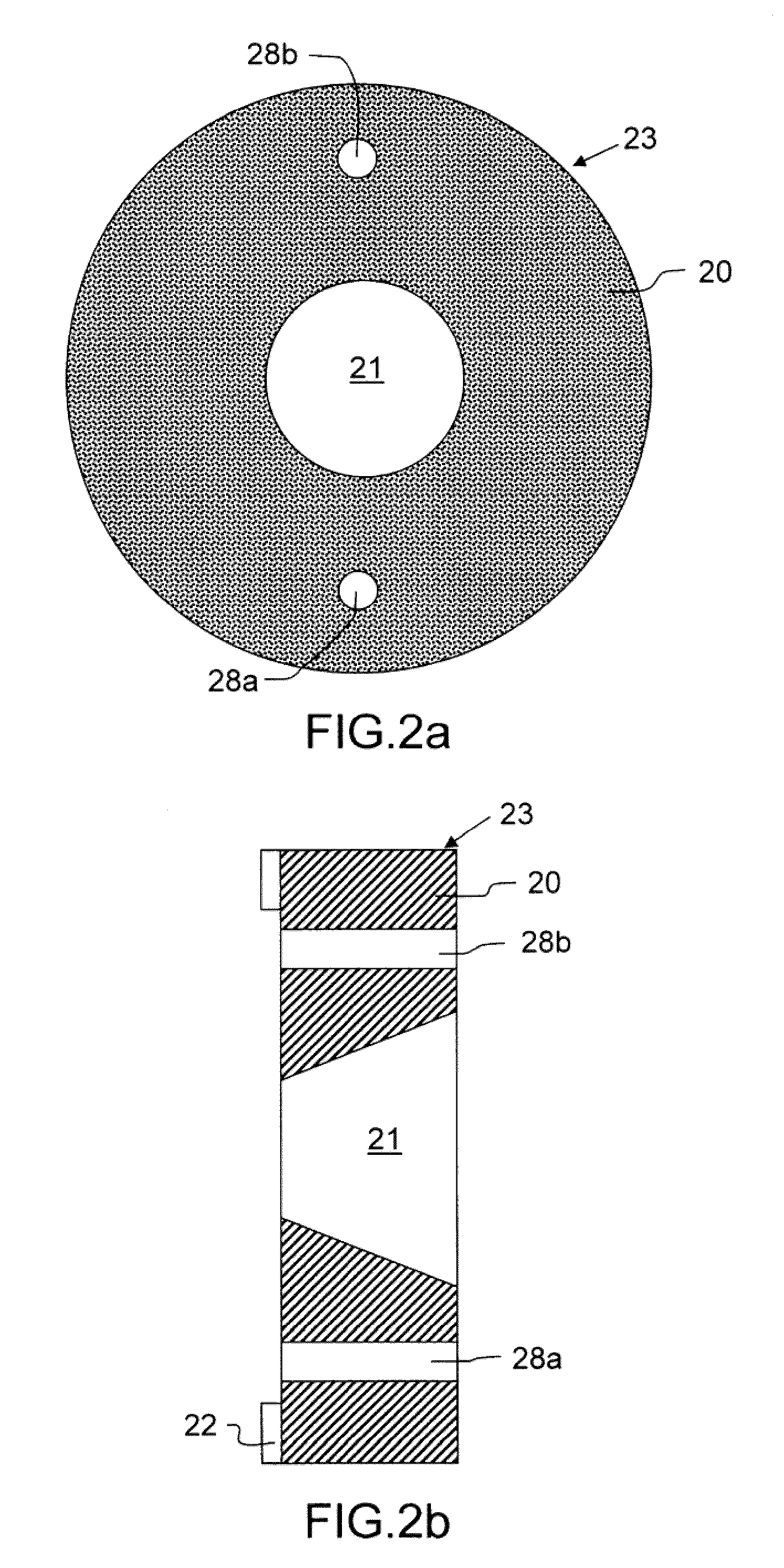Seal-tight grommet and method of producing same
a technology of sealing device and grommet, which is applied in the direction of electrical equipment, etc., can solve the problems of limiting the use of the chamber to test benches and electronic devices, rendering the fixing of the cables to the wall of the chamber virtually final, and ensuring the seal-tightness of the chamber. simple and cost-effective
- Summary
- Abstract
- Description
- Claims
- Application Information
AI Technical Summary
Benefits of technology
Problems solved by technology
Method used
Image
Examples
first embodiment
[0036] the relative spacing between the conductor wires 4 is maintained by beads 31 threaded around each conductor wire 4.
second embodiment
[0037] the relative spacing between the conductor wires 4 is obtained by a first step of clamping the conductor wires 4 at each end of the section where a plug 6 is to be formed and a second step of bringing the ends together to obtain an ovoid form of the strand 5.
[0038]According to a particular embodiment, the coating of the conductor wires 4 comprises a step of passing the conductor wires 4 through a mould, the internal form of which corresponds to that of the plug 6 and a step of injection of the elastic material into the mould.
PUM
 Login to View More
Login to View More Abstract
Description
Claims
Application Information
 Login to View More
Login to View More - R&D
- Intellectual Property
- Life Sciences
- Materials
- Tech Scout
- Unparalleled Data Quality
- Higher Quality Content
- 60% Fewer Hallucinations
Browse by: Latest US Patents, China's latest patents, Technical Efficacy Thesaurus, Application Domain, Technology Topic, Popular Technical Reports.
© 2025 PatSnap. All rights reserved.Legal|Privacy policy|Modern Slavery Act Transparency Statement|Sitemap|About US| Contact US: help@patsnap.com



